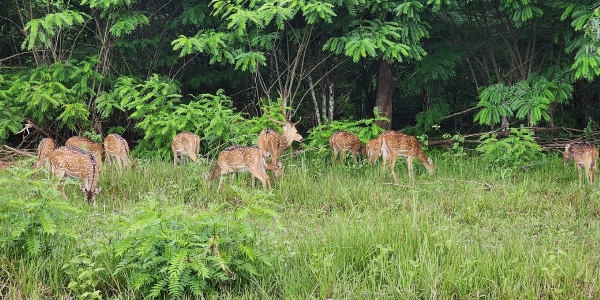
Discovering the Secrets of Wayanad's Wildlife
The most visited wildlife sanctuary in Wayanad District of Kerala, India, is the Wayanad Wildlife Sanctuary. It also forms a part of the Nilgiri Biosphere Reserve. Many nature lovers , photographers , and enthusiasts are here because it possesses rich biodiversity and is an excellent landscape with rare and endangered species seen in their natural habitat. This sanctuary is very rich in flora and fauna with high ecological value. The types of vegetation found here include dense tropical, moist, deciduous, and semi-evergreen forests. Some of the common trees found here are teak, ebony, sandalwood, and rosewood. Many medicinal plants can be found in this sanctuary. There are many things one can do in this sanctuary. Some of them are quite popular, and some of them are as follows:

One can go on a jeep safari or trek through nature to see the various species both inside and outside the sanctuary. On safaris, one gets to see elephants and tigers along with many more varied wild species close by.
Bird Watching: It has a good number of birds, and for the bird watcher, it gives an adventurous chance.
Trekking and Hiking: It has trek routes that can take you through scenic trails into the world of wilderness.
Canoeing: Kabini River has wonderful boat rides or canoeing and a beautiful view of the sanctuary if viewed from the water.
Camp: There is a provision for all those people who would love to camp here at night in the wild; they can do so in parts of the sanctuary.
This is one of the best times to come around this sanctuary, wintertime from October till May, and the weather is comfortable in that season; it would be the right scenario to spot wildlife. It is possible to have the road slippery around the months of monsoon, namely, June, July, and September time when the forest gets lush green. Wayanad Wildlife Sanctuary is part of India's efforts at conserving wildlife and, by extension, protecting endangered species such as the tiger and Asian elephant. The sanctuary lies within the UNESCO-listed Nilgiri Biosphere Reserve for biological importance and supports ecological balance.

The Kerala Forest Development Corporation keeps the reserve and maintains the integrity of the ecosystem of the reserve. Conservation of the reserve, preventing the practice of poaching, replenishment of the habitats and ecotourism fall on the list of their management. Wayanad is believed to have had intact forests and fertile land previously when it had come strategically between Kerala and Karnataka. This has been the abode for centuries for the indigenous tribes, like the Paniyas, Kurumas, and the Ooralis, who could live based on the survival system offered by the forests and their richness. They have evolved techniques for non-destructive hunting and gathering to stay at such lands. Their incorporation into nature has made it to be such a very important area from the standpoint of ecology.

The large Kingdom of Mysore already occupied this land in the ancient and medieval ages. In the 18th century, also it had been the land of kings Mysore Hyder Ali and his son Tipu Sultan, who used to be very fond of keeping intact natural treasures areas. It was, however, in the 20th century when the history of this refugee site became a place to conserve nature. It further developed and extended in the 1990s. With the level of conservation, it went higher and thus caught the attention of the government and the Wildlife Institute of India. With modern techniques of wildlife monitoring along with better infrastructures such as ecotourism facilities, people's awareness of biodiversity becomes high. It became a model for wildlife conservation not only in Kerala but all across the country. Today, it is one of the most important protected areas of India, with a beautiful natural landscape and significant ecological importance.

The sanctuary falls under the Nilgiri Biosphere Reserve, which is a large area part of an environmental region of rare and endangered species. Wayanad itself is an area of thriving wilderness, and the sanctuary has played a critical role in the protection of habitats for many animals. Continuous efforts have made this place a hub for successful tourist destinations for those interested in ecotourism and wildlife safaris. This region , with its rich history, has now developed as a landmark for conservation because it conserves both its cultural heritage of Indigenous people and the natural heritage of endangered species of India.
👉 Looking for a thrilling trip near Bangalore? Don’t miss the chance to experience the Wayanad Tour Package with Escape2Explore. This guided adventure offers scenic trails, an ancient fort, and breathtaking sunrise views — perfect for weekend getaways and nature lovers.
Check Out: One Day Trip From Bangalore | Trekking Near Bangalore | Two Day Trip From Bangalore

Nearby Attraction:
Edakkal Caves: Edakkal Caves is one of the most visited prehistoric caves which feature pictorial writings dating back some 6,000 years. The cave carvings throw some light on the earlier human civilizations and, thus, an important destination for the lovers of history. It is located about 12 km from the sanctuary.
Pookode Lake: It is almost 15 km distance from Wayanad Wildlife Sanctuary , and Pookode Lake is a freshwater lake enclosed with green beautification—a wonderful boating as well as a picnic area in the serenest climate.
Soochipara Falls: Soochippara Falls is a distance of 22 kilometres. A three-tiered waterfall is covered with the dense forest of Wayanad. It stands amidst the famous trekking, photography, and picnic places.
Chembra Peak: Chembra Peak is the highest peak in Wayanad. It is 20 km from the sanctuary. Rolling hills and valleys are visible from the top. The heart-shaped lake near the peak is an attraction. Nature lovers love trekking towards the summit of the peak.
Banasura Sagar Dam: Banasura Sagar Dam is the largest earth dam in India and lies around 40 km from Wayanad Wildlife Sanctuary. Panoramic views and a very beautiful destination for trekking and a boat ride, it is located a few kilometres away from each one of these.
Kuruva Island: Kuruva Island is an island chain on the Kabini River, 45 km from Wayanad. This region is well known for its pristine nature, bamboo forests, and peaceful waterways, which is a perfect secluded sojourn.
Sultan Bathery Jain Temple: There is this ancient Jain temple that lies approximately 30 kilometres from the sanctuary , which holds a lot of historical significance. That old Sultan Bathery Jain Temple, covered with many greens, resonates with the spiritual heritage of Wayanad.
Muthanga Wildlife Sanctuary: Muthanga Wildlife Sanctuary is another big reserve within the region. The wildlife sanctuary is just 16 km away from Wayanad Wildlife Sanctuary. It comes under the Nilgiri Biosphere Reserve and houses many animals, including elephants, tigers, and leopards.
Pakshipathalam Bird Sanctuary: Pakshipathalam is 45 km from the bird sanctuary in the Brahmagiri Hills. It is claimed to have several species of birds for the sake of its admirers and lovers of nature.
Wayanad Heritage Museum: Ambalavayal has a museum named Wayanad Heritage Museum, located approximately 15 km from the sanctuary. The museum addresses tribal culture, ancient artefacts, and regional history. It is an educational site for visitors who are interested in local heritage.
Tholpetty Wildlife Sanctuary: This is nearly about 60 km northeast of the Wayanad district. As this falls into the group of complex Wayanad Wildlife Sanctuary and is rich in forest, it accommodates various wild species. Hence, it is not bad for the safaris.
Iruppu Falls: Iruppu Falls is a fall located 50 km from Wayanad in the beautiful Brahmagiri Hills. The place is one of the most popular resorts for nature lovers and trekkers and enjoys an identity of sorts, due to its proximity to the Ramanatheswara Temple.
How To Reach:
By Air: The nearest airport is Calicut International Airport, approximately 65 km from the sanctuary. You can take a taxi or bus there, and it should take you around 1.5 to 2 hours. For people flying in from very far places, Bangalore International Airport is around 230 km away.
By Train: The Nearest Railway Station is Kozhikode Railway Station (CKE) , which is 65 km from the sanctuary. From here, one can get a taxi or bus , and it will take almost 1.5 to 2 hours to reach the sanctuary. The other railway station is Mysore, which is around 100 km from Wayanad. \
By Bus: Regular buses are available from Kozhikode, Mysore , and Bangalore to Wayanad. From Kozhikode, it covers 65 km, nearly 100 km, which roughly translates to 1.5 to 2.5 hours to Wayanad. End It is highly accessible by road, where roads are particularly well-designed highways, including Bangalore at 230 km, Mysore at 100 km, and Kozhikode at approximately 65km. You may even travel by taxi or your vehicle up to this reserve.
Trending Packages : Kote Betta Trek | Hampi Trip | Kuamara Parvatha Trek | Mullayanagiri Trek | Kemmangundi Trek | Dandeli Trip
Why Book with escape2explore
When exploring Wayanad tour packages from Bengaluru and beyond, escape2explore stands out as a trusted name in adventure and experiential travel. Here’s why hundreds of travellers choose us for their getaways:
Trusted, Well-Reviewed Local Operator: escape2explore has gained the trust of thousands of content tourists all over India. With persistent positive feedback and an unblemished reputation for delivering quality experiences, we assure you that your experience will be hassle-free, memorable, and value-packed. Our insider local knowledge guarantees that you will always be in safe hands.
Seasoned Guides: Our trips are led by friendly, trained, and professional guides who are passionate about the outdoors and your safety. Whether it's a beach trek, a cultural tour, or a spiritual walk through temples, our team knows the terrain, the stories, and how to make each moment count.
Safe & Curated Itineraries: Your safety is our number one priority. Our tour packages are thoughtfully crafted with safety measures, researched accommodations, and easy travel arrangements. We take care of the details so you can have the experience hassle-free and worry-free.
Unique Experience That You Won't Find Anywhere Else: With escape2explore, you discover more than the tourist attractions. We go off the beaten track with hidden beaches, unusual treks, offbeat cultural destinations, and true interactions
Read: Church Street| Art of Living | Devanahalli Fort | Snow City | Big Banyan Tree
Recent Blogs
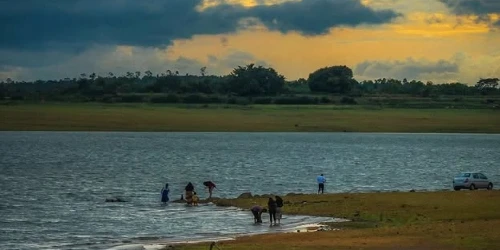
Things to Do in KRS – Explore Krishna Raja Sagar Dam
Jul 22, 2025

Conquering Khaliya Top: A Thrilling Trek to Panoramic Views
Jul 22, 2025

Everest: Conquering the Roof of the World
Jul 22, 2025
Related Blogs
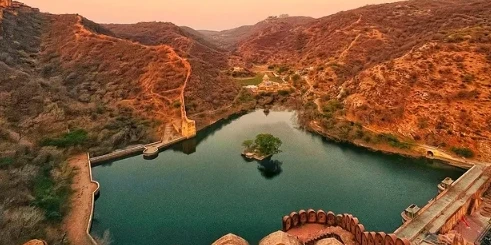
Ready for a Riot of Colors? Explore Rajasthan!
Jun 17, 2025
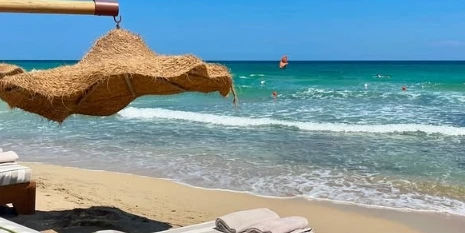
Coastal Charms: Discovering the Beaches and Culture of Mumbai
Jun 14, 2025
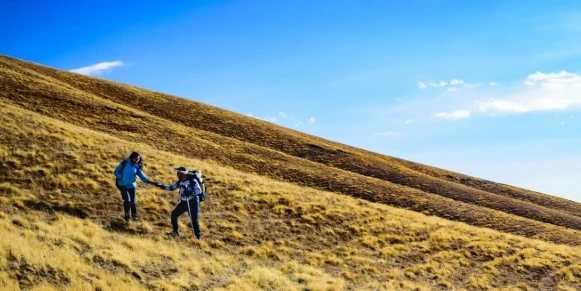
A Trekker’s Diary: What I Learned on the Ali Bedni Bugyal Trek
Jun 12, 2025

About Us
Unleash adventure near Bangalore! From hills to caves, immerse in nature's thrill. Unforgettable memories await!
Quick Links
Contact Us
1st floor, 318, 8th Main Rd, Remco Bhel Layout, Ideal Homes Twp, RR Nagar, Bangalore - 560098
